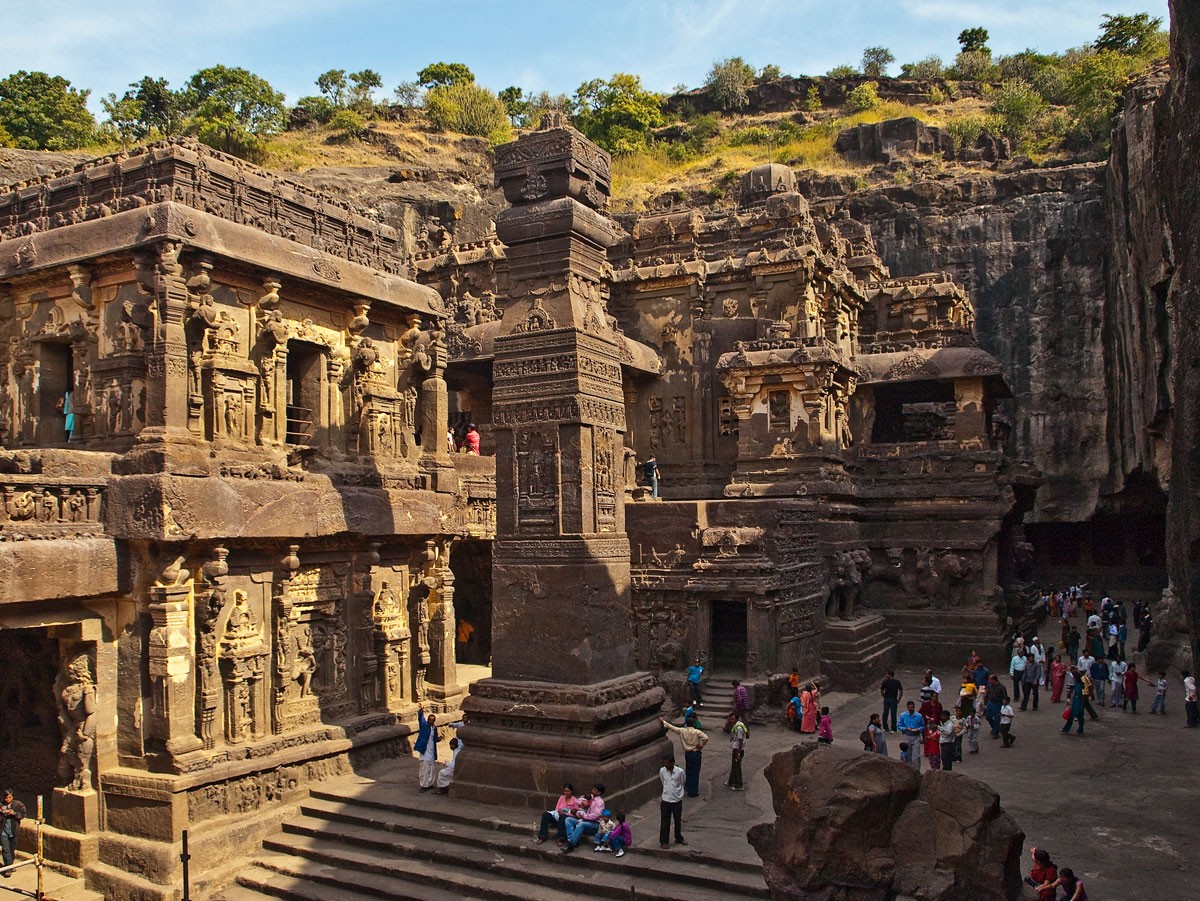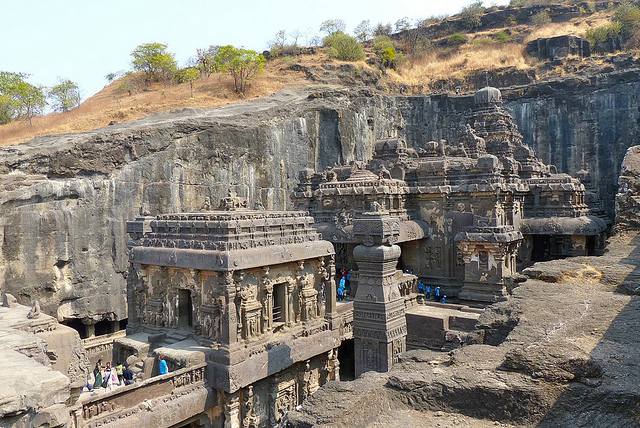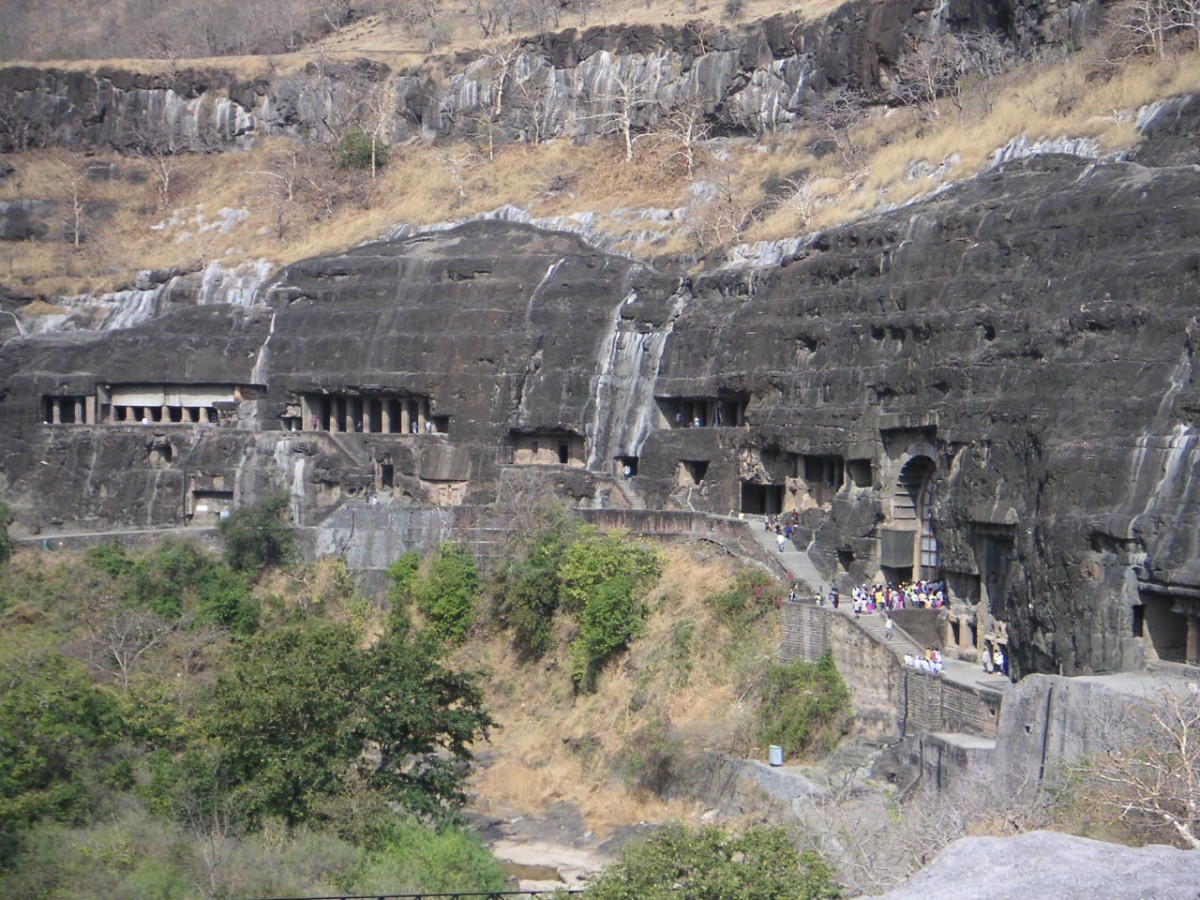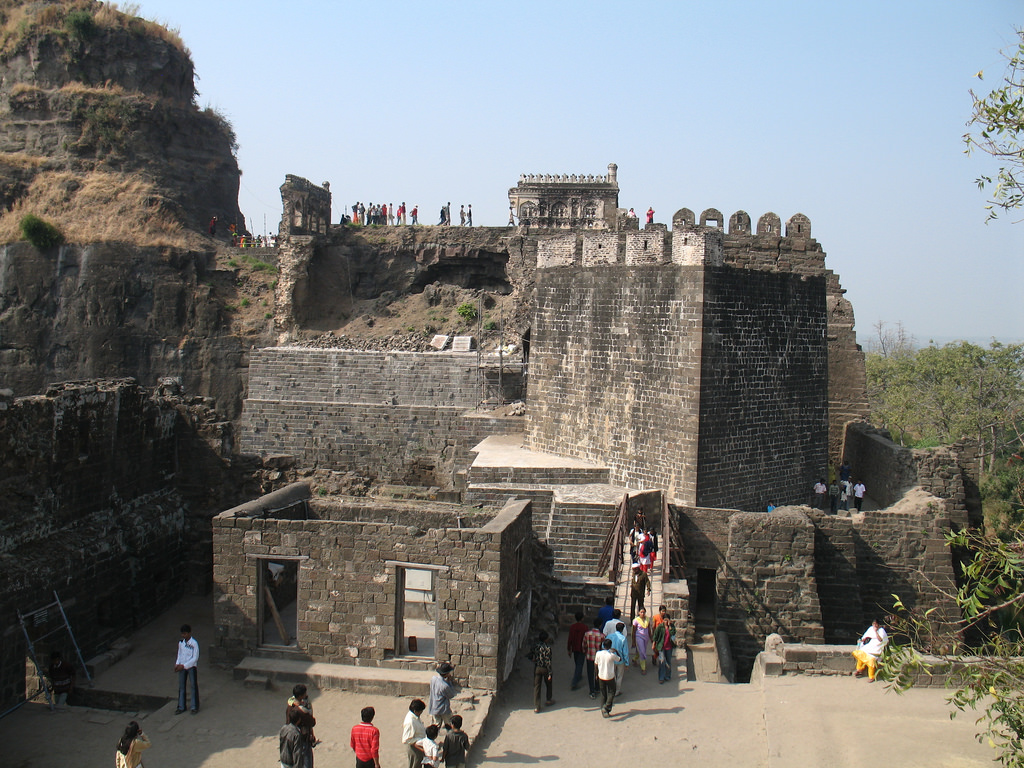
Ellora Caves
The Ellora rock-cut caves, the most spectacular of India’s monuments, are located 29 km noorthwest of Aurangabad. The majestic beauty, the architectural style and the sculptures carved out of the Deccan trap rocks of Ellora have beenEllora Caves acclaimed by the entire world. The excavations were executed in different periods. The contruction was started in 2.5 century A.D. and was continued later in the 5th and 6th centuries A.D. in the Buddhist style of architecture. The construction activity,between 6th and 9th century A.D. was continued, mostly by the Hindus and Jains.There are hundreds of caves cut at Ellora. Out of these only 34 caves containing different sculptures are well preserved and have been declared as protected monuments. The Buddhists were the first religious people to make 12 rock-cut caves. These consisted of a prayer hall and attached monasteries. These were single-storeyed excavations with one hall up to 35m deep and 18m wide entered through the verandah with long central hall containing different shrines or cells. Several others were three-storeyed with a number of cells to accommodate at least 40 priests. The most notable of the excavated caves is the chaitya hall which measures 26 x 14 x 10. In addition to the 12 Buddhist caves, there are 17 (Nos. 13-29) Hindu caves and 5 (Nos. 30-34) Jain caves.

The Ellora caves had been sculptured mainly in amygdaloidal traps which have innumerable vesicles measuring 4 to 5 mm. and are mostly filled with dirty white zeolites which impart a mottled appearance to the rock. The zeolites fall off due to weathering, resulting in a pitted apperanace a is seen in many of the carvings. In addition to the vesicles there are 12 cavities of varying dimensions (average size 30*12*15 cm) in cave 17. These cavities are generally filled with Ellora Cavessecondary minerals like zeolites, quartz and chalcedony. The amygdaloidal basalt flows have undulating tops and bottoms, and have limited lateral extent. The thin flows are invariable amygdaloidal and free from jointing. In case of thicker flows, lower portions are free from amygdales and vesicles, and are jointed, while the upper portions have concentrations of amygdales and vesicles and have no jointing. In the majority of the flows pipe amygdales are present at the bottom. Top surfaces of the flows are glassy and have become red due to alterationand at places, have developed ropy structures.
The Ellora caves, like the Ajanta caves are a wealth of the medieval sculpture. Buddha in different forms is the main theme of the scukptural work. In addition, human figures as attendants of Buddha, animals and birds and have also been carved in the stone. In the Jain temples the image include Ganesh and Tirthankars. The Hindu temples contain sculptures of a number of gods and goddesses, specially those of Siva in different postures. In addition, the images depicting themes of the Hindu epics like Ramayana have been carved out. In the Kailasa temple Ravana is shown shaking the hill on top of which Lord Siva with his consort Parvati are seated.







